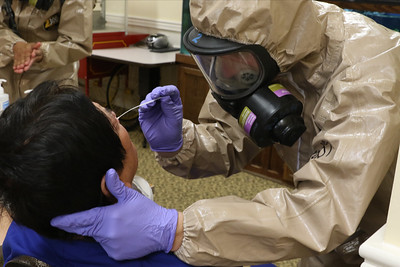WCC President Rose Bellanca announced last month that students would go back to campus in the fall under limited circumstances. But some students returned to campus last month to complete clinicals and lab work from the interrupted Winter semester.
The College outlined back to campus procedures for students in a mandatory Blackboard course. In addition to the check-in procedures, some students must sign up online for available lab time in designated blocks. The College has also specified that it will have new cleaning procedures in place for all occupational education classrooms.
While evaluating classroom spaces for safe capacity and flow is essential, simple screening for COVID-19 may not be enough to protect faculty, staff and students while on campus. WCC will screen students based on symptoms. That’s not a bad idea, but it’s a very incomplete way to identify COVID-19 cases.
Data from China, where the virus originated, show that nearly half of all people who tested positive for COVID-19 were asymptomatic. Most asymptomatic carriers were women in their 20’s, 30’s and 40’s. Unfortunately, people in this age range are also least likely to seek medical attention. And why would they – especially if they think nothing is wrong with them?
For every six people with the virus that WCC’s COVID-19 screening process catches, it will miss another four infected individuals.
That should pretty much scare the hell out of faculty, staff and students who must go back to campus.
The availability of on-site testing is critical. Having on-site testing capabilities would enable faculty, students and staff to receive COVID-19 testing immediately. It would also help identify which spaces and buildings must be closed for cleaning. On-site testing must be part of any plan to go back to campus.
Photo Credit: Virginia National Guard Public Affairs , via Flickr











